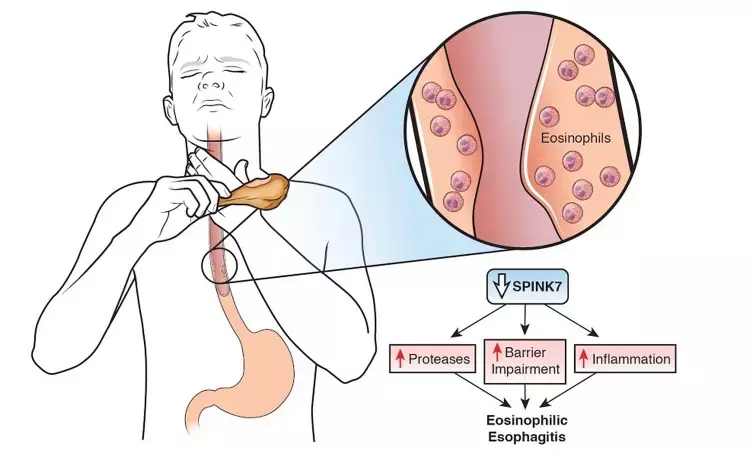- Home
- Medical news & Guidelines
- Anesthesiology
- Cardiology and CTVS
- Critical Care
- Dentistry
- Dermatology
- Diabetes and Endocrinology
- ENT
- Gastroenterology
- Medicine
- Nephrology
- Neurology
- Obstretics-Gynaecology
- Oncology
- Ophthalmology
- Orthopaedics
- Pediatrics-Neonatology
- Psychiatry
- Pulmonology
- Radiology
- Surgery
- Urology
- Laboratory Medicine
- Diet
- Nursing
- Paramedical
- Physiotherapy
- Health news
- Fact Check
- Bone Health Fact Check
- Brain Health Fact Check
- Cancer Related Fact Check
- Child Care Fact Check
- Dental and oral health fact check
- Diabetes and metabolic health fact check
- Diet and Nutrition Fact Check
- Eye and ENT Care Fact Check
- Fitness fact check
- Gut health fact check
- Heart health fact check
- Kidney health fact check
- Medical education fact check
- Men's health fact check
- Respiratory fact check
- Skin and hair care fact check
- Vaccine and Immunization fact check
- Women's health fact check
- AYUSH
- State News
- Andaman and Nicobar Islands
- Andhra Pradesh
- Arunachal Pradesh
- Assam
- Bihar
- Chandigarh
- Chattisgarh
- Dadra and Nagar Haveli
- Daman and Diu
- Delhi
- Goa
- Gujarat
- Haryana
- Himachal Pradesh
- Jammu & Kashmir
- Jharkhand
- Karnataka
- Kerala
- Ladakh
- Lakshadweep
- Madhya Pradesh
- Maharashtra
- Manipur
- Meghalaya
- Mizoram
- Nagaland
- Odisha
- Puducherry
- Punjab
- Rajasthan
- Sikkim
- Tamil Nadu
- Telangana
- Tripura
- Uttar Pradesh
- Uttrakhand
- West Bengal
- Medical Education
- Industry
Elimination diets show similar histologic and endoscopic outcome in eosinophilic esophagitis patients

Histologic remission rates and improvement in histologic and endoscopic features were similar in adults with eosinophilic esophagitis after one-food elimination diet (1FED) and six-food elimination diet (6FED), says an article published in The Lancet Gastroenterology and Hepatology.
Empiric elimination diets are effective in achieving histological remission of eosinophilic esophagitis, but there are no randomized trials comparing diet therapy. Therefore, Kara Kliewer and team conducted this study to compare a six-food elimination diet with a one-food elimination diet for the treatment of eosinophilic esophagitis in adults.
In a multicenter, randomized, open-label study, Kliewer and colleagues analyzed the outcomes of 129 patients (54% male; mean age, 37 years) with active symptomatic eosinophilic esophagitis who were assigned to either a six-food elimination diet (6FED) or one-meal elimination diet (1FED) for 6 weeks. 62 patients started the 6FED and eliminated animal milk, wheat, egg, soy, fish and shellfish, peanuts and tree nuts, while 67 patients started the 1FED eliminating only animal milk.
The primary outcome was the proportion of patients in histological remission, defined as a peak esophageal count of less than 15 eosinophils per high-power field (eos/hpf). Other results included the proportion of patients in complete (peak 1 eos/hpf) and partial remission (peak 10 eos/hpf and 6 eos/hpf) and changes from baseline in the EoE histological scoring system; EoEHSSand. EoE reference score (EREFS), EoE activity index (EEsAI) and quality of life.
The key findings of this study were:
After six weeks, patients with a histological response to 1FED could be crossed over to 6FED, and those without a response to 6FED could be crossed over to topical fluticasone propionate.
Results showed that 40% of patients in the 6FED group and 34% in the 1FED group achieved histological remission, and there was no significant difference between the groups for the stricter thresholds for partial remission.
However, the difference in the proportion of patients achieving complete remission was "significant", 19% versus 6%. The maximum number of eosinophils decreased in patients of both groups.
The researchers reported no significant differences in mean changes in EoHSS (-0.23 vs. -0.15), EREFS (-1 vs. -0.6), or EEsAI (-8.2 vs. -3) and both quality scores decreased. groups compared to baseline.
Among histologic nonresponders, nine of 21 patients who received 6FED and nine of 11 patients who switched to an unrestricted fluticasone propionate diet achieved histologic remission.
In conclusion, the study shows the benefit of nutritional therapy, as assessed by histological and endoscopic measurements, and that nutritional therapy alters the pathogenesis of the underlying disease by correcting molecular transcription associated with eosinophilic esophagitis.
Reference:
Attwood, S. E. (2023). Bringing dietary therapy for eosinophilic oesophagitis under scientific scrutiny. In The Lancet Gastroenterology & Hepatology. Elsevier BV. https://doi.org/10.1016/s2468-1253(23)00041-9
Neuroscience Masters graduate
Jacinthlyn Sylvia, a Neuroscience Master's graduate from Chennai has worked extensively in deciphering the neurobiology of cognition and motor control in aging. She also has spread-out exposure to Neurosurgery from her Bachelor’s. She is currently involved in active Neuro-Oncology research. She is an upcoming neuroscientist with a fiery passion for writing. Her news cover at Medical Dialogues feature recent discoveries and updates from the healthcare and biomedical research fields. She can be reached at editorial@medicaldialogues.in
Dr Kamal Kant Kohli-MBBS, DTCD- a chest specialist with more than 30 years of practice and a flair for writing clinical articles, Dr Kamal Kant Kohli joined Medical Dialogues as a Chief Editor of Medical News. Besides writing articles, as an editor, he proofreads and verifies all the medical content published on Medical Dialogues including those coming from journals, studies,medical conferences,guidelines etc. Email: drkohli@medicaldialogues.in. Contact no. 011-43720751


